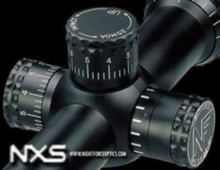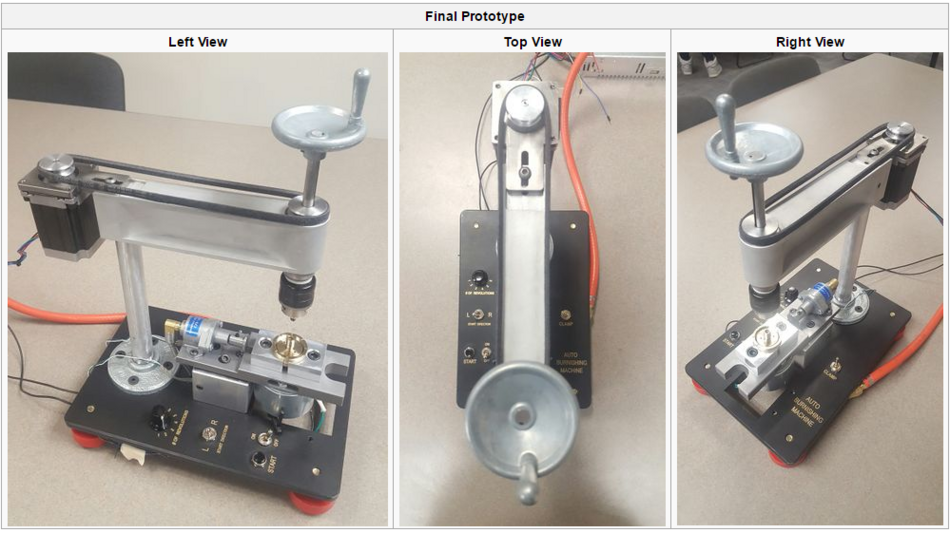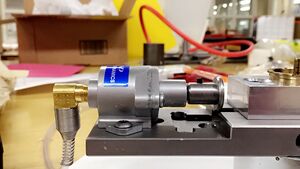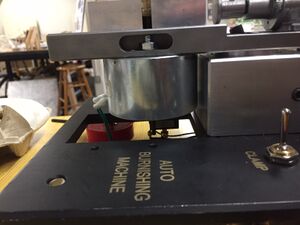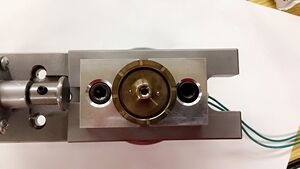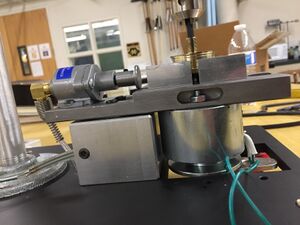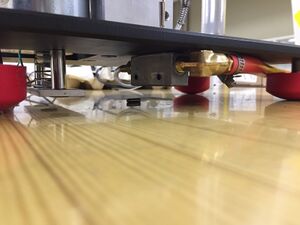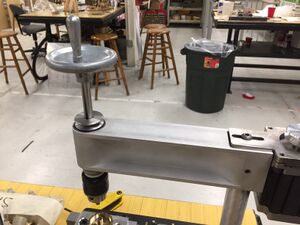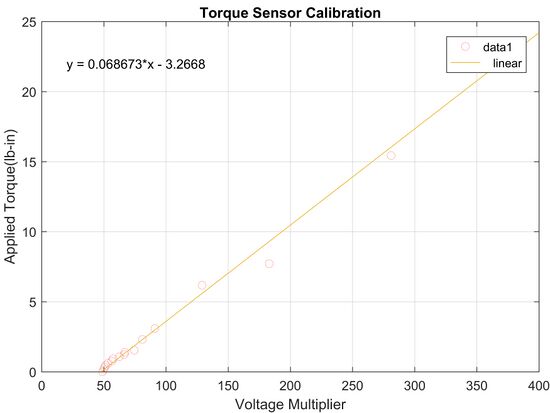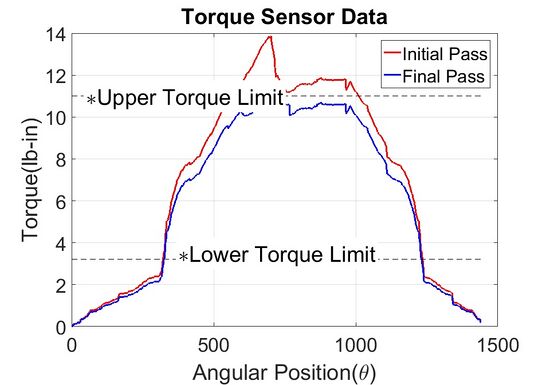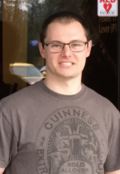Automated Burnishing Machine
| Nightforce | |
| Sponsors |
|
| Team Name | M-RAD |
| Faculty Advisers | |
| Mentor | |
| Client Point of Contact | |
| Duration | Fall 2016 - Spring 2017 |
| Team Members |
|
Design, fabricate, and test automated method to burnish lead screw threads. This device should be able to burnish lead screw threads automatically with minimal user input and be able to achieve repeatability in thread backlash and torque to a finite amount.
Background
Lead screws are used to operate the windage and elevation adjustments on riflescopes they are manually burnished to achieve minimal backlash. This fitment is a critical part of the riflescope's performance. This is a time consuming process involves manually running the lead screw in and out of the mating part until proper fitment is achieved. This has to be done for each mated set of parts. Being able to substantially reduce burnishing time would leave machine shop resources available for other projects on the Nightforce manufacturing floor.
Project Description
Nightforce optics prides themselves on their precision, reliability and feel of their rifle scopes. All of which rely on lead screws for precision adjustments. The elevation and windage adjustments are done by turning the dials on the top and sides of the scope. The dials contain a lead screw screw and bucket assembly to make the adjustments. Currently a manufacturing process of the lead screws is done manually. A hand finished Nightforce turret is well known for the its feel and accuracy. Team M-Rad's goal from the University of Idaho is to design and build a machine that will replicate the manual process that produces a quintessential Nightforce lead screw. The device will need to be user friendly, and possess the ability to measure torque and linear backlash of the final product. The end result will allow one manufacturer to simultaneously work on multiple lead screws at once while maintaining Nightforce precision and reliability.
Project Goal
To design and prototype automated burnishing device which is simple to operate, adjustable to different turret models and capable of burnishing to a specified torque and backlash.
Deliverable
The expected result is a proof of concept machine capable of successfully burnishing in a variety of lead screws to the agreed upon spec. The design should show a repeatable result and be able to output data regarding the burnishing operation.
Prototype
Initial prototype
Base Assembly
Air Piston
Torque sensor
Compact Linear Solenoid
Displacement sensor
Stepper Motor
Machined Platform
|
Final prototype
| Switches
Clamp: Actuates Short Stroke Air Piston to clamp turret into the correct position for the burnishing process to begin # of Revolutions: Set the number of revolutions for the stepper motor to drive the full length of the turret *Note: Turret Specific L and R Start Direction: Specify which direction the stepper motor starts, based off of left vs right start on threads and location of lead screw in turret On/Off: Turn the stepper motor on and off for spindle adjustment or in case of an emergency Start: Initiate the automated burnishing process Other Components Spindle Handle: Allows for manual spindle adjustment Ring Magnet: Suspends spindle and handle in the upper position when the machine is not being operated Stepper Motor: Implemented larger stepper motor, 1.89 Nm to meet all torque demands Motor Driver: Used higher quality CNC motor driver to avoid damage to the electronic system Power Supply: Utilized a 24 volt adjustable power supply to meet the voltage need on the stepper motor |
| Component Photo | Overview | Component Photo | Overview |
|---|---|---|---|
| Short Stroke Air Piston | Torque Sensor | ||
| Compact Liner Solenoid | Clamping Block | ||
| Base Assembly | Air Position | ||
| Keyed Shaft | Stepper motor
|
Torque Sensor
| Torque Sensor Calibration
Linear Calibration Performed on torque sensor |
Torque Sensor Burnishing Data
Torque Sensor readings measured during burnishing process |
Team Members
| Selso Gallegos:
Major: BS in Mechanical Engineering
| |
| Blake Warner:
Major: BS in Mechanical Engineering
| |
| Kyle Flack:
Major: BS in Mechanical Engineering
| |
| Fawaz Alharbi:
Major: BS in Mechanical Engineering
|
Document Archive
- Meeting Minutes
- Presentations
- Other Project Docs

